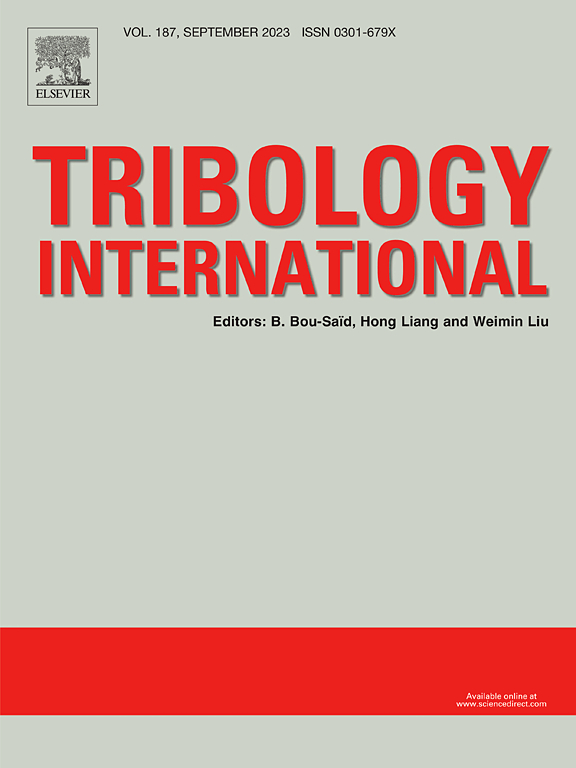Nanostructured oxide composites in PEO coating of β Ti alloys with low elastic modulus for biomedical applications
IF 6.1
1区 工程技术
Q1 ENGINEERING, MECHANICAL
引用次数: 0
Abstract
In this work, tribocorrosion of Ti-15Nb, Ti-40Nb, and Ti-33Nb-33Zr biomedical alloys in artificially simulated body fluid is studied by a tribocorrosion technique that allows measuring resistance to corrosion and wear at the same time for alloys coated by PEO technique using a bioactive solution for incorporation calcium, phosphorus, and magnesium that promote the formation of a passive ceramic layer with porosity made by TiO2. The kinetics parameters were calculated by the taffel curves extrapolation, the coefficient of friction during the process and the morphology and type of wear before, and after PEO coating on the alloys. XRD, SEM, and TEM evaluated a previous structural and microstructural study of the ceramic layer. Tribocorrosion tests were performed using a reciprocating pin-on-disk tribometer under constant load, and a counterpart, Al2O3, were used against the alloys in contact pressure on the tribocorrosion mechanisms. Among the β Ti-Nb-(Zr) alloys, an improved wear and corrosion resistance with lower damage was remarked for TN15, TN40, and TNZ33 alloys, with better results for TN40 (rp=9.8 µm/year), followed by TN15(rp=15.1 µm/year) and TNZ33(rp=15.5 µm/year) PEO coated samples. The improvement of tribocorrosion resistance can be attributed to the presence of zirconium oxide (ZrO2) and rutile (TiO2), the thickness (TN40: 1.3 µm; TNZ33:5.2 µm; TN15: 6.7 µm) and pore size (TN40: 2.64 µm; TNZ33: 3.68 µm; TN15: 3.09 µm) of the PEO ceramic layer.
求助全文
约1分钟内获得全文
求助全文
来源期刊

Tribology International
工程技术-工程:机械
CiteScore
10.10
自引率
16.10%
发文量
627
审稿时长
35 days
期刊介绍:
Tribology is the science of rubbing surfaces and contributes to every facet of our everyday life, from live cell friction to engine lubrication and seismology. As such tribology is truly multidisciplinary and this extraordinary breadth of scientific interest is reflected in the scope of Tribology International.
Tribology International seeks to publish original research papers of the highest scientific quality to provide an archival resource for scientists from all backgrounds. Written contributions are invited reporting experimental and modelling studies both in established areas of tribology and emerging fields. Scientific topics include the physics or chemistry of tribo-surfaces, bio-tribology, surface engineering and materials, contact mechanics, nano-tribology, lubricants and hydrodynamic lubrication.
 求助内容:
求助内容: 应助结果提醒方式:
应助结果提醒方式:


